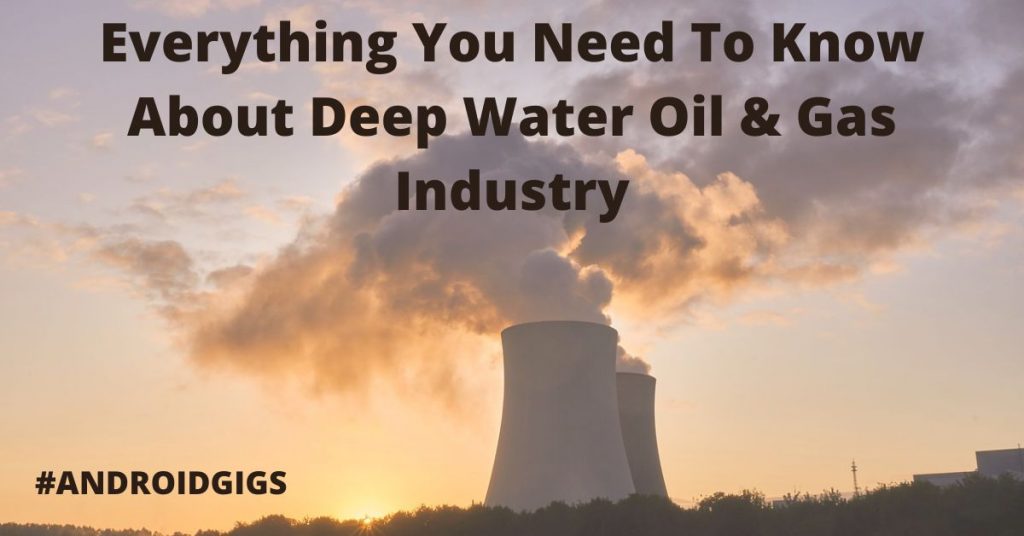Deepwater oil and gas production presents many hurdles, and developing stranded offshore gas fields adds to those problems.
Despite the current economic recession’s flattening of global energy demand, the long-term trend of rising global energy demand is likely to continue. To keep up with this growth, we must maximize energy efficiency and use all available energy sources.
This article explores the deep drilling technologies that will be needed for future oil and gas exploration and production in deep water. Also, technological avenues will make these advancements economically viable and environmentally sustainable.

An Overview Of Deep Water Drilling
Deepwater drilling, also known as deep good drilling, uses a drilling rig to bore holes into the Earth’s crust at great depths to retrieve oil from beneath the waves. More than 3,400 deepwater wells operate in the Gulf of Mexico, all at depths greater than 150 meters.
Many years passed before deepwater drilling became either technically or economically possible, but as oil prices have increased, more businesses have begun to invest in this area. Companies like Halliburton, Diamond Offshore, Transocean, Geoservices, and Schlumberger have made large investments.
Since the explosion at the Deepwater Horizon in 2010, the market for deepwater gas and oil has been on the comeback trail, with total expenditures in the market of approximately US$35 billion per year and total worldwide capital expenditures of approximately US$167 billion in the preceding four years.
Also Read: How to Start an Organic Fertilizer Production Company?
An Overview of the History Of Deep Water Drilling
The earliest records of water wells in human history can be found in China. The Chinese found and began extensively using groundwater pumped at great depths for consumption.
The Book of Changes, originally a Western Zhou dynasty (771–1046 BC) document used for divination, includes a passage that discusses the methods the Chinese used to ensure the safety of their water supply and keep their wells in good working order.
As early as 6000–7000 years ago, archeological finds and ancient Chinese records show that the Chinese possessed the knowledge and ability to drill deep water wells for human consumption. The Neolithic period is typically attributed to the construction of a well discovered at the Hemedu excavation site.
A square frame was affixed to the top of the well’s casing, which was constructed from four rows of logs. Sixty more tile wells are thought to have been constructed southwest of Beijing in approximately 600 BC for use as watering holes and irrigation systems.
Classifications of Offshore Drilling Platforms
Two primary categories of mobile deepwater drilling rigs—the semi-submersible and the drillship—are available for use while drilling in deep waters. Drilling can be done from a spar platform, tension-leg platform, or semi-submersible production platform on land or at sea.
Below is the practical classification:
1. Jack-Up Rig
A jack-up rig is a floating rig that may be transported to a new location, where it will then have its legs lowered to the seafloor and fastened into position. The platform is then lifted out of the water and into the air. The absence of concerns about weather and waves makes this rig design more secure for crew members to use.
2. Fixed Platform
The term “Fixed Platform” refers to a tall, (often) steel framework that holds up a deck. The Fixed Platform is extremely expensive to construct because it is tethered to the ocean floor. This platform’s maximum recommended water depth is 500 meters (1,600 feet).
3. Semi-Submersible Production Platform
The majority of this semi-submersible production platform floats above the water. The wellhead is often situated on the ocean floor. Thus, additional safety measures are required to prevent ball valve leakage.
The leak-prevention system failed, which helped create the 2010 oil spill disaster. These rigs may function from the surface down to depths of 2,000 meters (660 ft).
4. Spar Platform
Spar Platforms are distinguished by employing a massive cylinder to anchor the platform to the ocean floor. Roughly 90% of the Spar Platform’s framework is submerged at any given time.
Spar Platforms are typically employed at depths of up to 1 kilometer (3,000 feet), although recent advancements in technology have made it possible for them to operate to depths as great as 3,550 meters (11,500 feet). In fact, it’s one of the deepest drilling rigs in operation right now.
Also Read: Advantages of Business Analysis
Conclusion
Energy is the lifeblood of a thriving economy. It’s what keeps our world ablaze, lit, and in motion. As the global population rises, more people will want to improve their living standards. More and different forms of energy will be needed even by major industries like car parts distributors or medical device injection molding factories.
Underneath the waters of the world’s seas, at depths ranging from a few hundred to several thousand meters, are massive sources of oil and natural gas that have the potential to enhance economic growth and play an important part in the future energy mix.
These supplies are located in areas where the water is between a few hundred and several thousand meters deep. The International Energy Agency estimates that as much as 270 billion barrels of oil in the deep sea worldwide can be extracted. So let’s wait and watch the global energy grow!
